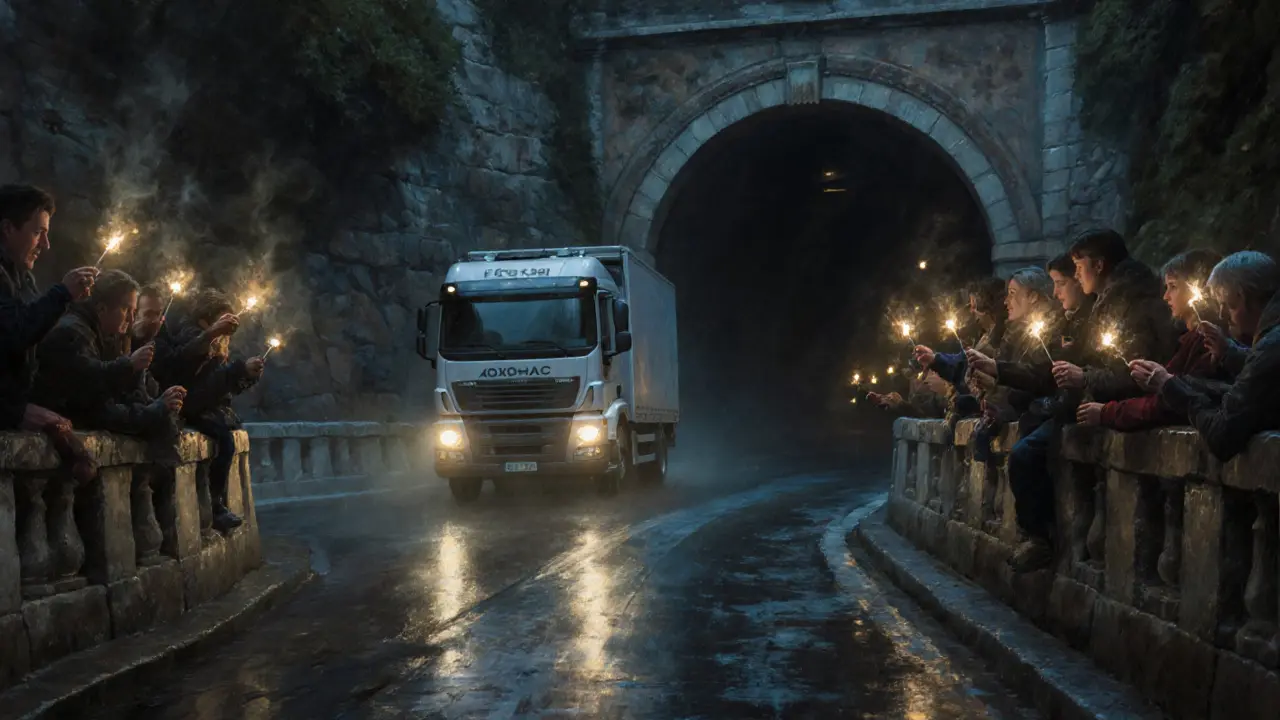The Monaco Grand Prix isn’t just a race. It’s a pulse. A heartbeat that stops the world for three days in May, then explodes into life again after dark. When the sun sets over the Mediterranean and the streetlights flicker on along the harbor, the track doesn’t sleep-it transforms. The Grand Prix de Monaco F1 nights are packed with energy, not because of the cars alone, but because of what happens when the checkered flag drops and the crowd spills into the streets.
The Track Comes Alive After Dark
Most Formula 1 races end with a podium, a press conference, and a quiet drive back to the paddock. Monaco doesn’t work that way. The race finishes around 6 p.m., but the real show starts after 9 p.m. The circuit, closed to traffic during the day, becomes a runway for luxury yachts, private jets, and high-end parties. The Port Hercule fills with champagne bubbles and laughter. The Place du Casino turns into an open-air dance floor. Fans who spent the day in grandstands now wander through pop-up bars where bartenders mix cocktails named after Senna and Prost.
There’s no official after-race event. No ticketed concert. Just a city that refuses to turn off. Locals know the rhythm: the first wave hits at 8:30 p.m.-drivers and team principals slipping into rooftop lounges like the Monte-Carlo Beach Hotel. The second wave comes at 11 p.m.-fans, influencers, and billionaires mixing on the same terrace, no VIP line, no velvet rope. The third wave? Midnight. That’s when the bass from the yacht parties echoes off the cliffs of Larvotto and the streets around the tunnel still hum with the ghost of tire smoke.
Why Monaco’s Night Energy Is Different
Other circuits have fireworks. Monaco has history. The tunnel isn’t just a dark stretch of asphalt-it’s a 1950s-era relic that still smells like oil and adrenaline. The hairpin at Sainte-Dévote? Drivers brake at 220 km/h, but at night, the crowd leans over the barriers like they’re watching a silent film. The energy isn’t manufactured. It’s inherited.
Compare it to Singapore’s night race. Singapore’s event is a spectacle: LED-lit grandstands, drone shows, synchronized light displays. Monaco? No screens. No pyrotechnics. Just the glow of a thousand cigarette lighters held up as the cars pass through the tunnel. One fan told me last year, “I don’t come for the lights. I come because I can feel the engine in my chest before I hear it.” That’s the difference. Monaco doesn’t need to impress. It just needs to be.

The People Behind the Lights
It’s not just the drivers who stay up. The mechanics who worked 18-hour shifts in the garage are the first ones at the bar. The team engineers who spent the day analyzing tire wear are now arguing over which corner was the most dangerous-Soulac, Mirabeau, or the Swimming Pool. You’ll see a Red Bull strategist in a tuxedo shirt, no tie, laughing with a Ferrari mechanic who’s still wearing his race suit under a borrowed blazer.
And then there are the locals. The old men who’ve sold ice cream at the Rascasse corner for 40 years. They don’t get paid extra for the Grand Prix. They just show up with their carts, their folding chairs, and their stories. One of them, Jean-Pierre, told me, “I’ve seen Senna win. I’ve seen Schumacher cry. I’ve seen F1 come back after the pandemic. But I’ve never seen the night quiet.”
The Sound That Never Fades
The V8 engines are gone. The hybrid power units are quieter, more efficient. But the sound? It’s still there. You hear it in the way the harbor waves crash against the yachts after a car exits the tunnel. You hear it in the silence right before the first car hits the chicane at Sainte-Dévote. You hear it in the collective gasp when a driver brakes too late and scrapes the wall-then the roar that follows.
There’s a reason the FIA doesn’t allow noise-canceling headphones in the grandstands. It’s not about safety. It’s about connection. You’re not just watching a race. You’re standing in the middle of a living archive. Every gear shift echoes off the same stone walls that echoed the first Grand Prix in 1929.

What Happens When the Lights Go Out
By 3 a.m., most of the crowds have thinned. The last party at the Yacht Club is winding down. The street sweepers roll in, picking up empty bottles and crushed napkins. The track is still wet from the rain that fell at 2 a.m.-a rare gift from the Mediterranean sky.
And then, at 4 a.m., a single car rolls out of the pit lane. It’s not a race car. It’s a maintenance truck. The driver, a local named Marc, has been working the Grand Prix for 27 years. He doesn’t get a trophy. He doesn’t get a photo op. But he stops for a moment, leans out the window, and watches the empty track. “It’s quiet now,” he says. “But tomorrow, it’ll be loud again.”
And he’s right. Because the energy isn’t in the noise. It’s in the waiting. In the anticipation. In the fact that every year, without fail, the same streets, the same corners, the same people come alive again-not because they’re told to, but because they can’t help it.
Why You’ll Never Forget It
If you’ve been to other races, you know the feeling: the roar of the crowd, the smell of burning rubber, the thrill of a last-lap pass. Monaco gives you all that-but it also gives you something else. A memory that doesn’t live in your phone. It lives in your bones.
You’ll remember the way the harbor lights reflected off the wet asphalt after the rain. You’ll remember the old man handing you a warm croissant at 6 a.m. because he saw you shivering. You’ll remember the silence between the last corner and the finish line, when the only sound was your own heartbeat.
That’s the magic. The Grand Prix de Monaco F1 nights aren’t about the fastest lap or the most podiums. They’re about being part of something that’s been going on longer than most people have been alive-and still hasn’t lost its soul.
Is the Monaco Grand Prix really held at night?
No, the Monaco Grand Prix race itself is held during the day, typically starting at 3 p.m. local time. But the nights after the race are where the real energy happens. The city stays awake, parties spill into the streets, and the atmosphere becomes electric. So while the track isn’t lit for racing at night, the entire city turns into a nighttime spectacle.
Can fans go onto the track after the race?
Not officially. The track remains closed for safety and cleanup until early morning. But fans often gather along the harbor walls, near the tunnel exit, or at the Rascasse chicane to watch the cars being towed back to the paddock. Some even sneak into the pit lane area during the chaos after the race-though this is risky and not recommended. The best way to experience the post-race buzz is to stay in the city and let the energy find you.
What’s the best place to watch the race if I want to feel the night energy?
The Rascasse corner is the most iconic spot-it’s where the race ends, and where the biggest crowds gather. But for the night energy, head to the Port Hercule after the race. The yachts, the music, the lights-it’s where drivers and fans mingle. If you want a quieter vibe, walk along the promenade near the Fairmont Monte Carlo. You’ll hear the engines fade into the distance and feel the city breathe.
Do drivers actually party after the race?
Some do, but not all. Many drivers are too drained to celebrate. Others, like Lewis Hamilton and Max Verstappen, have been spotted at private rooftop parties. But the real partying happens among the team staff, engineers, and local fans. Drivers often go straight to the hotel, then meet friends later. It’s not about wild nights-it’s about quiet moments with people who’ve lived the same intensity.
Is it worth going to Monaco just for the night after the race?
Absolutely-if you’re looking for something beyond the race. The Grand Prix is one thing. The nights are another. The way the city transforms, the way strangers become friends over a glass of rosé on the harbor, the way the lights reflect off the water-it’s unforgettable. You won’t find this energy anywhere else in motorsport. It’s not just a race. It’s a cultural moment.




